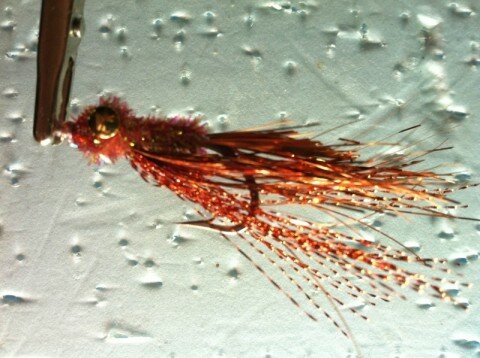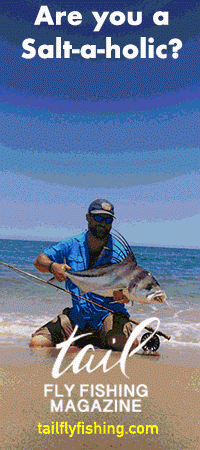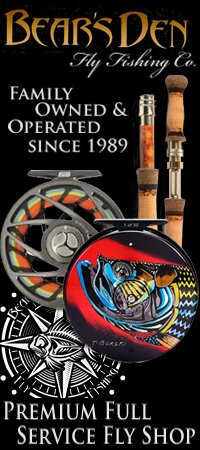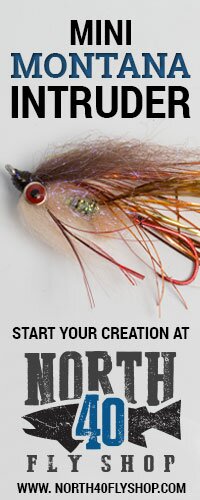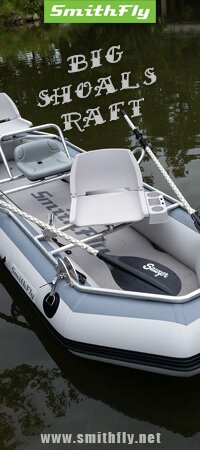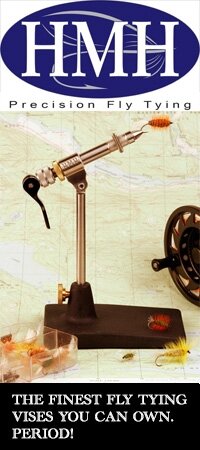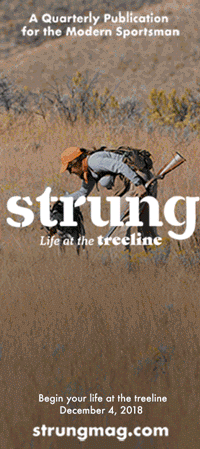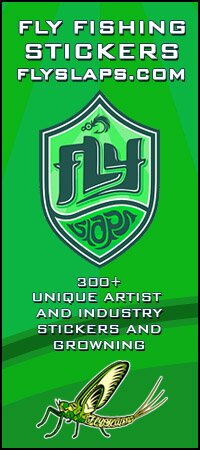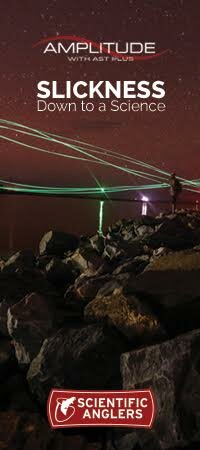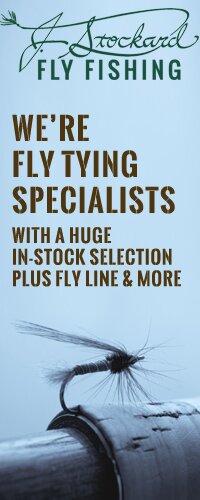How many fly patterns are out there? There are too many to count. There are attractor patterns, baitfish patterns, crustacean patterns, streamers, poppers, sliders, weighted flies, reverse ties, hi-ties, hollow ties…it’s endless. There is one group of flies that catch everyone’s attention…those used by guides. Guides’ flies are a mix of science, art, common sense, deductive reasoning, necessity and most commonly, desperation. They may be designed and developed over a long period of time and years of experience on the water or in those few moments of panic while trying to “match the hatch” as opportunity swims by. Regardless of their genesis, most guides’ flies have a common thread (pun intended), they are designed to be simple, relatively quick to tie and highly effective.
The Copperhead, designed by Capt. Randy Hamilton of Charleston, SC is a classic guide’s fly. Randy was on one of his first trips for redfish around Georgetown, SC and encountered thunderstorms on a low tide which turned the water to chocolate milk conditions. The flies he had with him were all natural patterns with little or no flash and yielded no fish in the muddy water. A buddy he was fishing with picked up a spinning rod with a Johnson Silver Minnow in gold on the end of the line and managed to pick up a few reds in the brown water. Randy went home and worked on a fly that would flash as much as that Johnson Minnow and came up with the first Copperhead. The next day, in the same location and same water conditions, the Copperhead was picking up reds and another guide’s fly was born.
Another characteristic of a guide’s fly is that with a little MacGyverism and minor alterations it will probably be just as effective on other species of fish as that for which it was originally intended. Randy says that his “go-to” fly for false albacore is the Crystal Copperhead which is tied with pearl materials as opposed to gold. He also sight-fishes for striped bass at night in the shadow lines of the Hampton Roads bridge tunnel on Chesapeake Bay using a root-beer colored version. Randy ties the Copperhead in chartreuse and pink which he also finds very effective for albies. In Florida, the color combination of green and gold has been extremely effective for speckled trout. Here in New England I have had great results with the Copperhead tied in chartreuse or olive while fishing for striped bass in backwater creeks and in boulder fields.
RECIPE:
Hook: saltwater, size #1 to 2/0
Thread: 6/0 Tan or Brown Uni-thread
Eyes: Medium chrome or gold dumbell
Tail: Copper Flashabou
Body: Copper Crystal Chenille (Estaz)
Underwing: Copper Krystal Flash
Wing: Copper Flashabou
TYING INSTRUCTIONS:
- Attach thread to hook and wrap shank fore and aft. Attach dumbbell eyes as you would for Clouser. Cement the wraps.
- Wrap the thread back to behind the eyes and fold in a dozen strands of copper flashabou for the tail and secure to the shank. Trim tail to about an inch past the hook bend. Cement the wraps.
- Tie in a 4” piece of copper crystal chenille at the hook band and palmar wrap forward to just behind the eyes. Secure with a couple of wraps and leave the tag end of the chenille hanging as it will be wrapped forward to finish the fly.
- Invert the hook in the vise (hook point facing up) and fold in a dozen strands of copper krystal flash tied in just behind the eyes.
- Fold in another dozen strands of copper flashabou on top of the krystal flash and advance the thread to the hook eye.
- Put a drop of cement on the flash tie in point and on the threads holding the dumbbell eyes on and then make 2 wraps behind the eyes with the tag end of the crystal chenille covering the flash tie in point and then figure-eight the dumbbell eyes with the chenille.
- Tie off and cement the head.
For other color versions of the Copperhead use the same materials but substitute the desired colors. For the Crystal Copperhead, for false albacore in particular, Randy recommends using Violet Krystal Flash for the underwing and Pearl Mirage for the wing.
This color combination is my favorite for snook under dock lights.
Special thanks to Capt. Randy Hamilton for emailing me the back story to this awesome fly!


